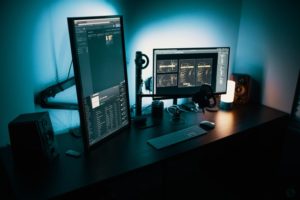
Dear readers, in this post SSC Previous Years Questions on Computer are given. These are important questions for other competitive exams as well. Answers of these questions are mentioned in the last of the post.
SSC Previous Years Questions on Computer
1- CAD stands for
a) Computer Automatic Design
b) Computer Aided Decode
c) Computer Automatic Decode
d) Computer Aided Design
2- Which of the following stores data permanently in a computer?
a) ALU
b) Cache
c) RAM
d) ROM
3- C++ is …………
a) an operating system
b) a programming language
c) a software
d) None of the above
4- Which is not an external storage?
a) CD-ROM
b) DVD-ROM
c) Pen Drive
d) RAM
5- The father of computer is
a) Charles Babbage
b) Charles Dikens
c) Oliver Twist
d) Love Lice
Also read – Classification of Computer
6- Identify the odd term amongst the following:
a) Microwaves
b) Coaxial cable
c) Optical fibre
d) Twisted pair wire
7- Which of the following is an impact printer?
a) Laser printer
b) Daisy wheel printer
c) Inkjet printer
d) Bubble-jet printer
8- Which of the following is a “Modifier Key”?
a) Control
b) Shift
c) Alt
d) All of the above
9- Which of the following is referred as the geometric arrangement of a computer system?
a) Protocol
b) Topology
c) Network
d) Media
10- Which one among the following is a main system board of a computer?
a) CPU
b) Keyboard
c) Microchip
d) Motherboard
11- Unix operating system is generally known as
a) Multiuser operating system
b) General application
c) Single user operating system
d) Single user application program
12- The technology used in the electronic printer is called
a) Microarray
b) Micromillimetric
c) Microencapsulation
d) Microtechnology
13- What is meant by WiMAX?
a) Wireless Interoperability for Microwave Access
b) Wired Interoperability for Microwave Access
c) Worldwide Interoperability for Microwave Access
d) Worldwide Infrastructure for Microwave Access
14- In which graphics, digital photos and scanned images are typically stored with extensions such as .bmp, .png, .jpg, .tif or gif?
a) Bitmap
b) Pixels
c) Plane
d) Both Bitmap and Pixels
15- Fortran is not used for…..
I. drawing pictures
II. carrying out mathematics computations
a) Only I
b) Only II
c) Both I and II
d) Neither I nor II
Also read – Important Antonyms for Competitive Exams (विपरीतार्थक शब्द)
Answers of above SSC Previous Years Questions on Computer
1(d), 2(d), 3(b), 4(d), 5(a), 6(a), 7(b), 8(d), 9(b), 10(d), 11(a), 12(d), 13(c), 14(a), 15(a)
You may use ‘comment section’ below for your valuable comments/feedback.
